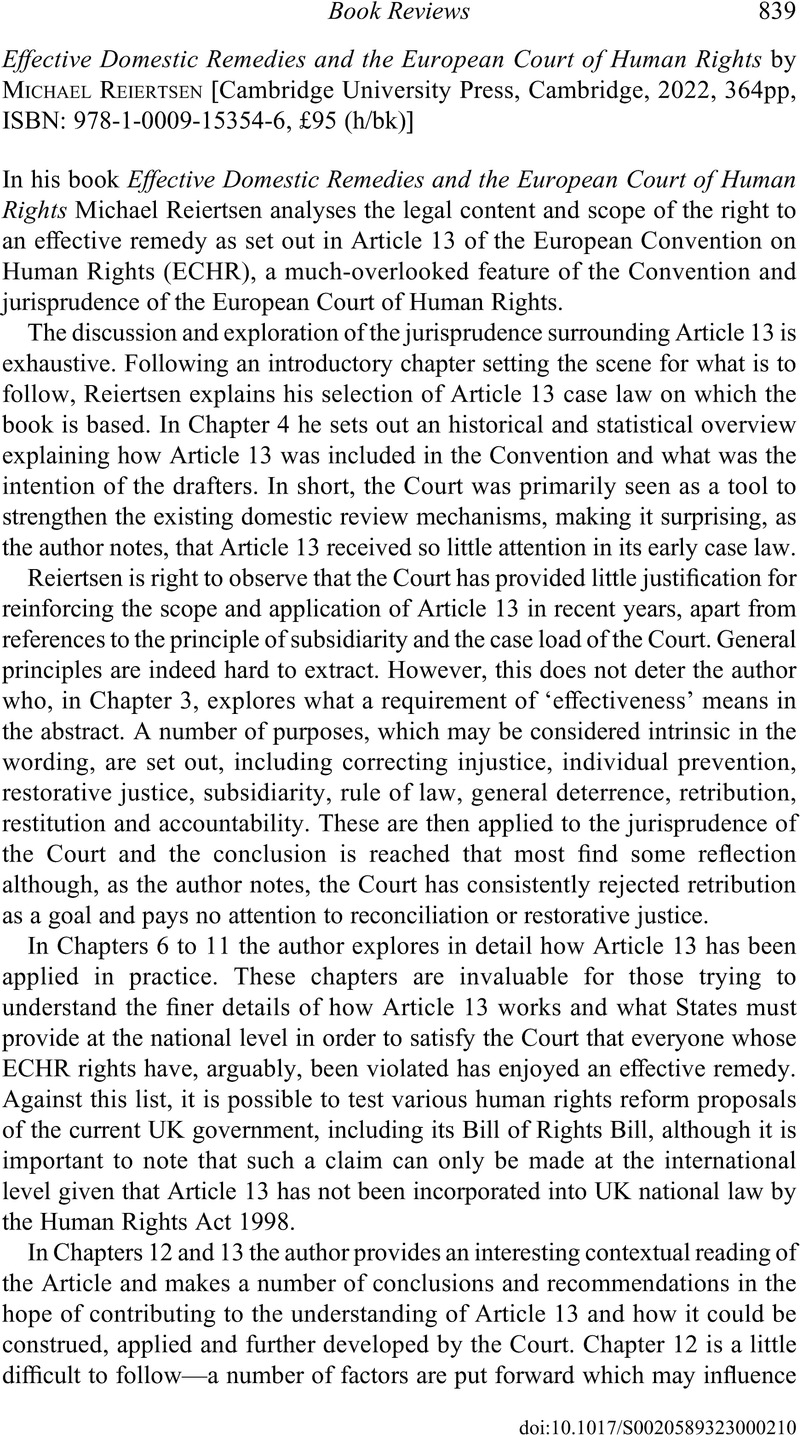No CrossRef data available.
Article contents
Effective Domestic Remedies and the European Court of Human Rights by Michael Reiertsen [Cambridge University Press, Cambridge, 2022, 364pp, ISBN: 978-1-0009-15354-6, £95 (h/bk)]
Review products
Effective Domestic Remedies and the European Court of Human Rights by Michael Reiertsen [Cambridge University Press, Cambridge, 2022, 364pp, ISBN: 978-1-0009-15354-6, £95 (h/bk)]
Published online by Cambridge University Press: 26 June 2023
Abstract
An abstract is not available for this content so a preview has been provided. Please use the Get access link above for information on how to access this content.

- Type
- Book Reviews
- Information
- Copyright
- Copyright © The Author(s), 2023. Published by Cambridge University Press on behalf of the British Institute of International and Comparative Law


